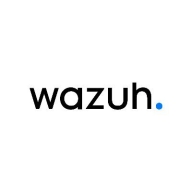

Trend Vision One and Wazuh compete in the cybersecurity software category, focusing on security solutions with various strengths. Based on the data, Trend Vision One seems to have the upper hand due to its comprehensive feature set and robust security capabilities.
Features: Trend Vision One offers advanced attack tracking, comprehensive endpoint features, and behavior detection. Its network protection and memory scanning capabilities are notable, while Smart Scan and Data Loss Prevention (DLP) are essential components. Wazuh stands out with its integration capabilities, cloud and on-premises application support, and vulnerability assessments. Its open-source nature provides cost-effectiveness and customization possibilities.
Room for Improvement: Trend Vision One can improve in reporting capabilities, third-party tool integration, and user interface enhancements for easier management. Better coordination among security playbooks and flexible portal configurations are also needed. Wazuh requires enhancements in threat intelligence integration, scalability, and provision of alert templates. Improvements in real-time monitoring for Unix systems and AI capabilities would also benefit Wazuh.
Ease of Deployment and Customer Service: Trend Vision One is recognized for versatile deployment across public, private, and hybrid clouds and generally responsive customer service, though some users report inconsistencies. Wazuh's deployment options are more tied to on-premises and hybrid cloud environments, supported by an active open-source community, although technical support can be challenging for complex implementations.
Pricing and ROI: Trend Vision One typically incurs higher costs due to its robust features, but users report seeing a return on investment through effective threat mitigation. Wazuh, being open-source, incurs no licensing fees, offering significant cost savings compared to enterprise alternatives. Additional support might incur extra costs, but it remains particularly appealing for budget-constrained organizations.
Our company went through a ransomware event, and if Trend Vision One had not stopped it, that could've closed the company's doors.
Trend Vision One has improved our ROI by 30 percent.
Thankfully, we also had cyber security insurance, and the insurance covered the incidents because, through Trend Micro and the implementation of the solution, along with the data it provided, we were able to demonstrate what had happened.
I have seen value in security cost savings with Wazuh, as using proprietary EDR versions could save us substantial money.
It's not just about high-level support with the chatbot; rather, when an issue occurs, we have the experts on-site and ready to respond swiftly, which is crucial.
Trend Micro supported us throughout the transition from on-prem servers or other vendors, providing top-notch service at all times.
Support responds quickly, and together we’ve been able to solve all challenges in our day-to-day operations.
They responded quickly, which was crucial as I was on a time constraint.
We use the open-source version of Wazuh, which does not provide paid support.
The documentation is good and provides clear instructions, though it's targeted at those with technical backgrounds.
I’d give scalability a 10 because nearly everything is integrated.
Our growth over the past three years has never caused performance or expansion issues.
I don't think I've encountered any issues with scalability; we're growing steadily, and I believe Trend Vision One can keep up with our demand.
It can accommodate thousands of endpoints on one instance, and multiple instances can run for different clients.
Currently, I don't see any limitations in terms of scalability as Wazuh can still connect many endpoints.
Scalability depends on the configuration and the infrastructure resources like compute and memory we allocate.
Trend Vision One works exactly as intended and has never hindered our operations, feeling more a collaborator than a roadblock.
The stability is very high.
Stability is critically important for us with Trend Vision One; it is very stable, providing continuous 24/7 support.
The stability of Wazuh is strong, with no issues stemming from the solution itself.
The stability of Wazuh is largely dependent on maintenance.
The indexer frequently times out, requiring system restarts.
Trend Vision One does not initially disclose to customers that they need to purchase additional licenses and pay more for integrations.
Consolidating case details into a single, more intuitive view would streamline investigations and save time.
The deployment can be complex, and we'd like an easier process, especially when integrating with on-prem and cloud environments.
Machine learning is needed along with understanding user behavior and behavioral patterns.
The integration modules are insufficiently developed, necessitating the creation of custom integration solutions using tools like Logstash and PubSub.
I think Wazuh should improve by introducing AI functionalities, as it would be beneficial to see AI incorporated in the threat hunting and detection functionalities.
I find the credit model non-transparent—you can't always tell how many licenses apply to which product.
I have seen others that are double or triple the price.
Customers who cannot afford CrowdStrike's pricing can easily opt for Trend Vision One.
Wazuh is completely free of charge.
I would definitely recommend Wazuh, especially considering Fortinet's licensing model which is confusing and overpriced in my opinion.
Totaling around two lakh Indian rupees per month.
The most important features of Vision One include visibility, AI integration, attack pattern analysis, predictive analytics, and centralized visibility and management across protection layers.
The most critical feature of Vision One is that it gives us a single console for threat management.
Its ability to identify unmonitored endpoints and perform log inspection, which establishes operational baselines and detects anomalies, proves invaluable for threat identification.
Wazuh is a SIEM tool that is highly customizable and versatile.
The system allows us to monitor endpoints effectively and collect security data that can be utilized across other platforms such as SOAR.
With this open source tool, organizations can establish their own customized setup.
| Product | Market Share (%) |
|---|---|
| Trend Vision One | 3.8% |
| Wazuh | 10.2% |
| Other | 86.0% |


| Company Size | Count |
|---|---|
| Small Business | 40 |
| Midsize Enterprise | 11 |
| Large Enterprise | 34 |
| Company Size | Count |
|---|---|
| Small Business | 26 |
| Midsize Enterprise | 15 |
| Large Enterprise | 8 |
Trend Vision One offers comprehensive protection for endpoints, networks, and email with centralized visibility. It is valued for its attack surface management, real-time threat detection, integrated management, ease of deployment, and user-friendly interface.
Trend Vision One provides a sophisticated security platform combining endpoint, network, and email protection with features like virtual patching and advanced AI capabilities. Its centralized management and integration with platforms like Office 365 and Azure make it an attractive option for organizations needing streamlined workflows and efficient risk management. While it boasts robust integrations and ease of use, enhancements are needed in reporting, tool integration, and reducing false positives. Users call for better support infrastructure, faster response times, and improved threat intelligence capabilities. Despite some complexity, its AI and ML features significantly enhance threat detection and response.
What Features Define Trend Vision One?
What Benefits Should Users Look For?
Trend Vision One is implemented in industries that require endpoint protection, ransomware defense, and incident response, being flexible for both on-premises and cloud environments. It is used to monitor servers, networks, and endpoints, providing features like email protection, behavioral detection, and threat visibility. Organizations benefit from AI and ML, improving their security posture and response capabilities.
Wazuh offers comprehensive security features like MITRE ATT&CK correlation, log monitoring, and cloud-native infrastructure. It ensures compliance and provides intrusion detection with high scalability and open-source flexibility, ideal for businesses seeking robust SIEM capabilities.
Wazuh stands out in security information and event management by providing efficient log aggregation, vulnerability scanning, and event correlation against MITRE ATT&CK. Its capability to integrate seamlessly with environments, manage compliance, and monitor files makes it suitable for cloud-native infrastructures and financial sectors. Despite its technical support needing enhancement and opportunities for improving AI integration and threat intelligence, its open-source nature and cost-effectiveness make it appealing. Users can leverage custom dashboards powered by Elasticsearch for precise data analysis, even though there is a desire for a more user-friendly interface and better enterprise solution integration. Deployment may be complex, but its features contribute significantly to fortified security postures.
What are the essential features of Wazuh?Industries like finance and cloud infrastructure heavily utilize Wazuh for its security strengths. By monitoring endpoints and ensuring compliance with frameworks, companies can improve security posture and swiftly detect anomalies. The platform's focus on event correlation and alerts for security incidents is particularly beneficial.
We monitor all Extended Detection and Response (XDR) reviews to prevent fraudulent reviews and keep review quality high. We do not post reviews by company employees or direct competitors. We validate each review for authenticity via cross-reference with LinkedIn, and personal follow-up with the reviewer when necessary.